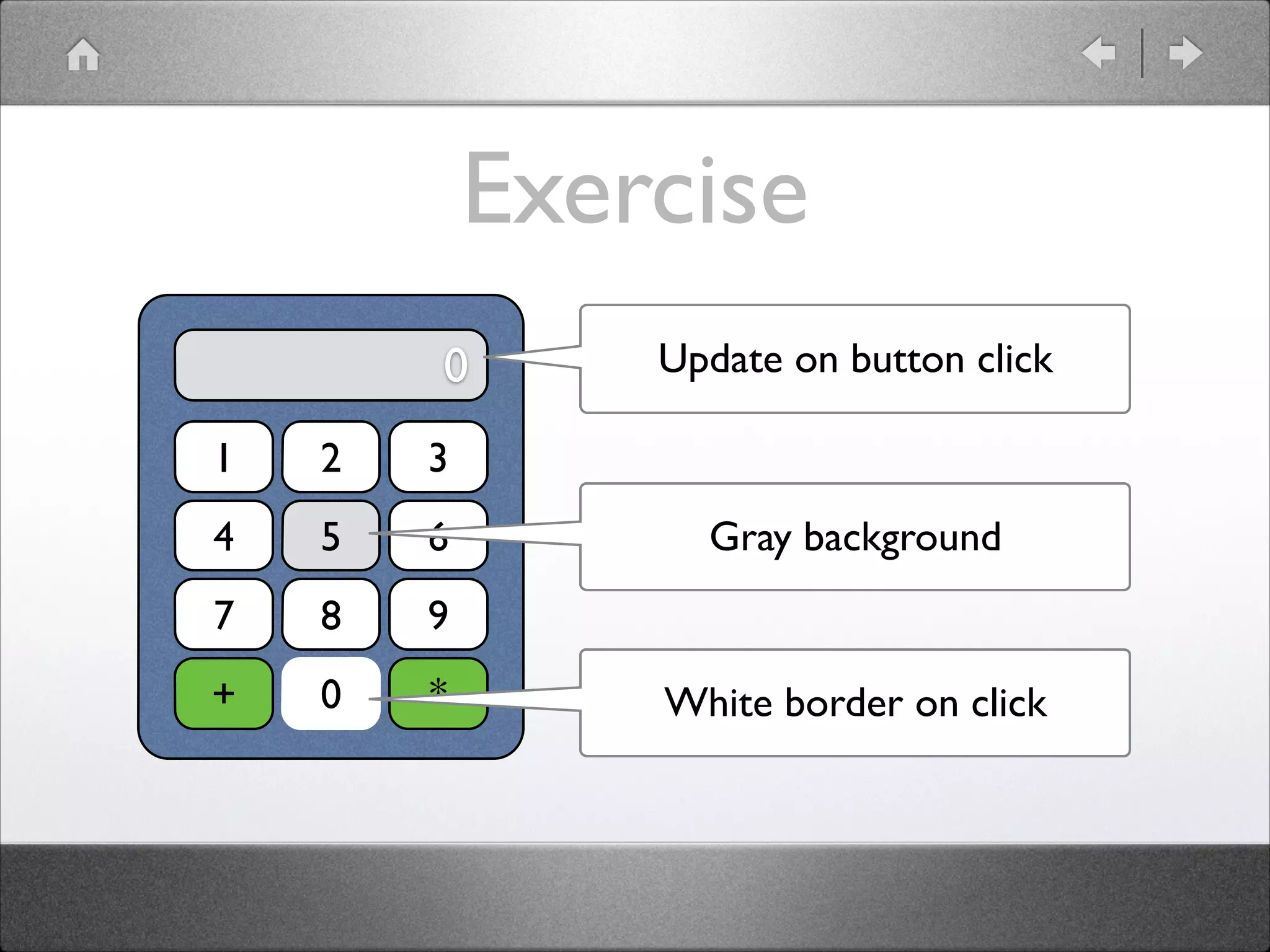The document discusses JavaScript abstraction in web development, emphasizing the importance of writing less code, increasing reusability, and anticipating future code evolution. It covers concepts such as overloading, event handling, object-oriented programming, and architectural patterns like MVC, advocating for a responsive and adaptive coding approach. The author shares coding practices, like clear nomenclature and module initialization, aimed at improving maintainability and performance.



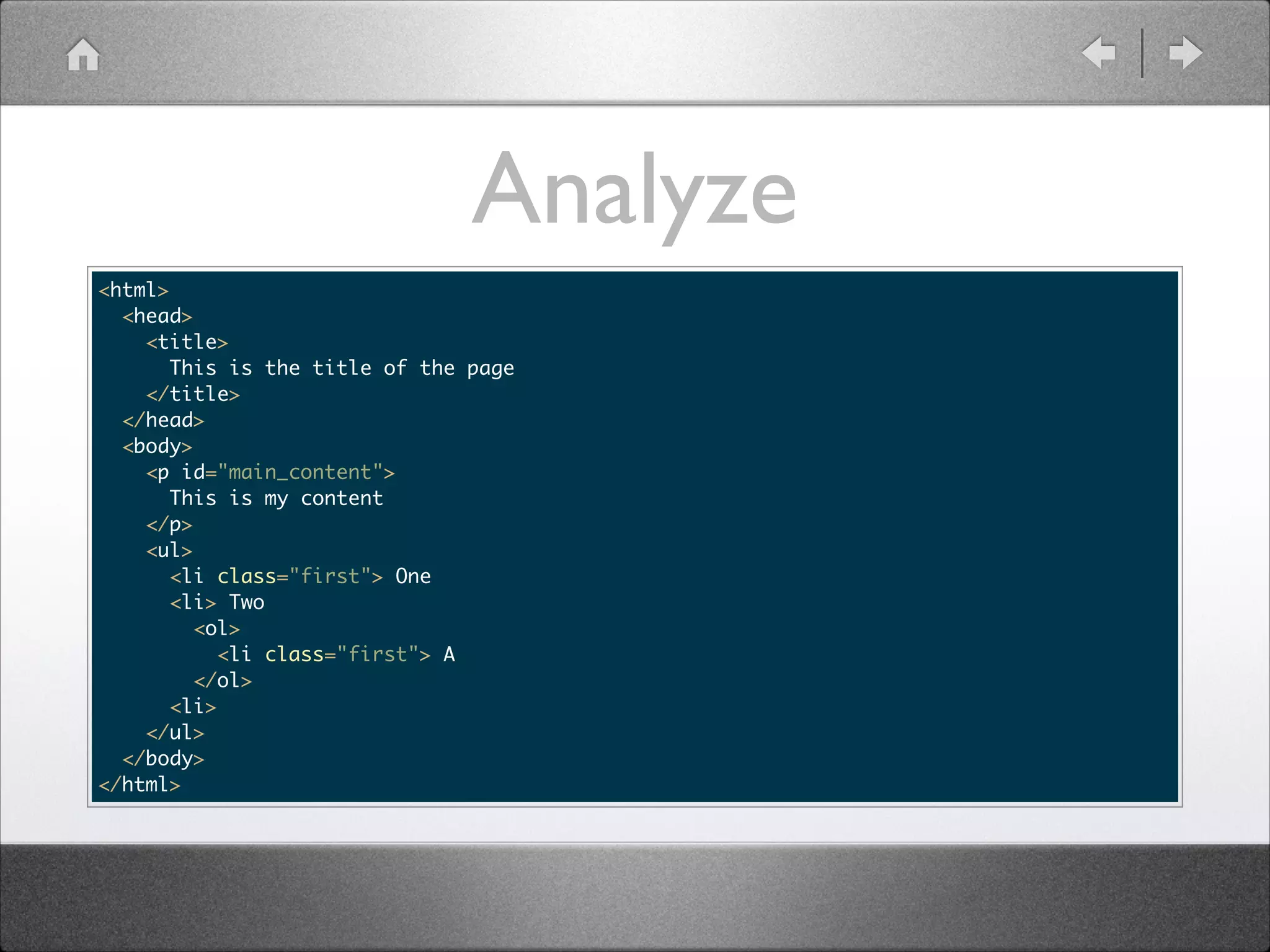
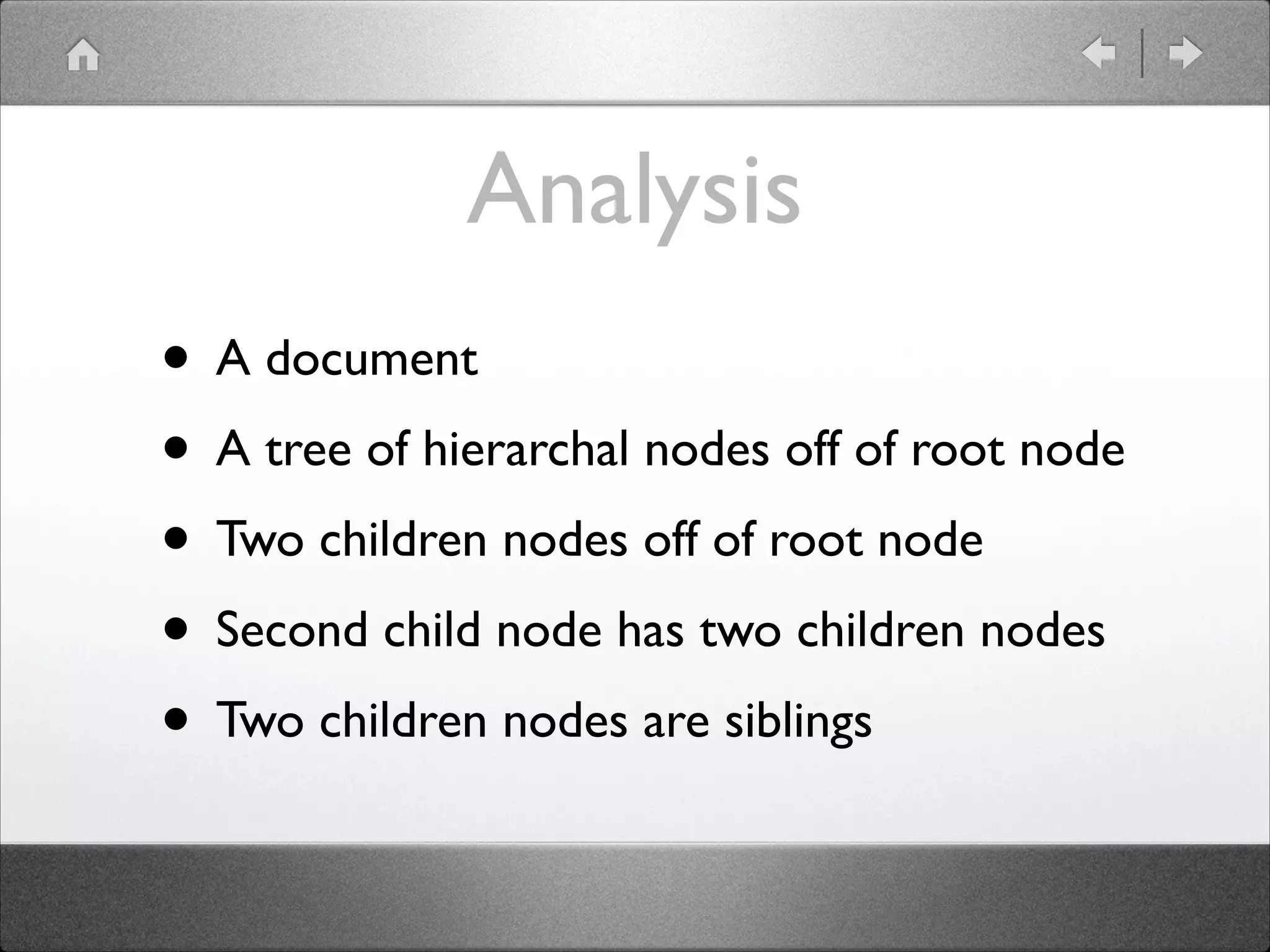
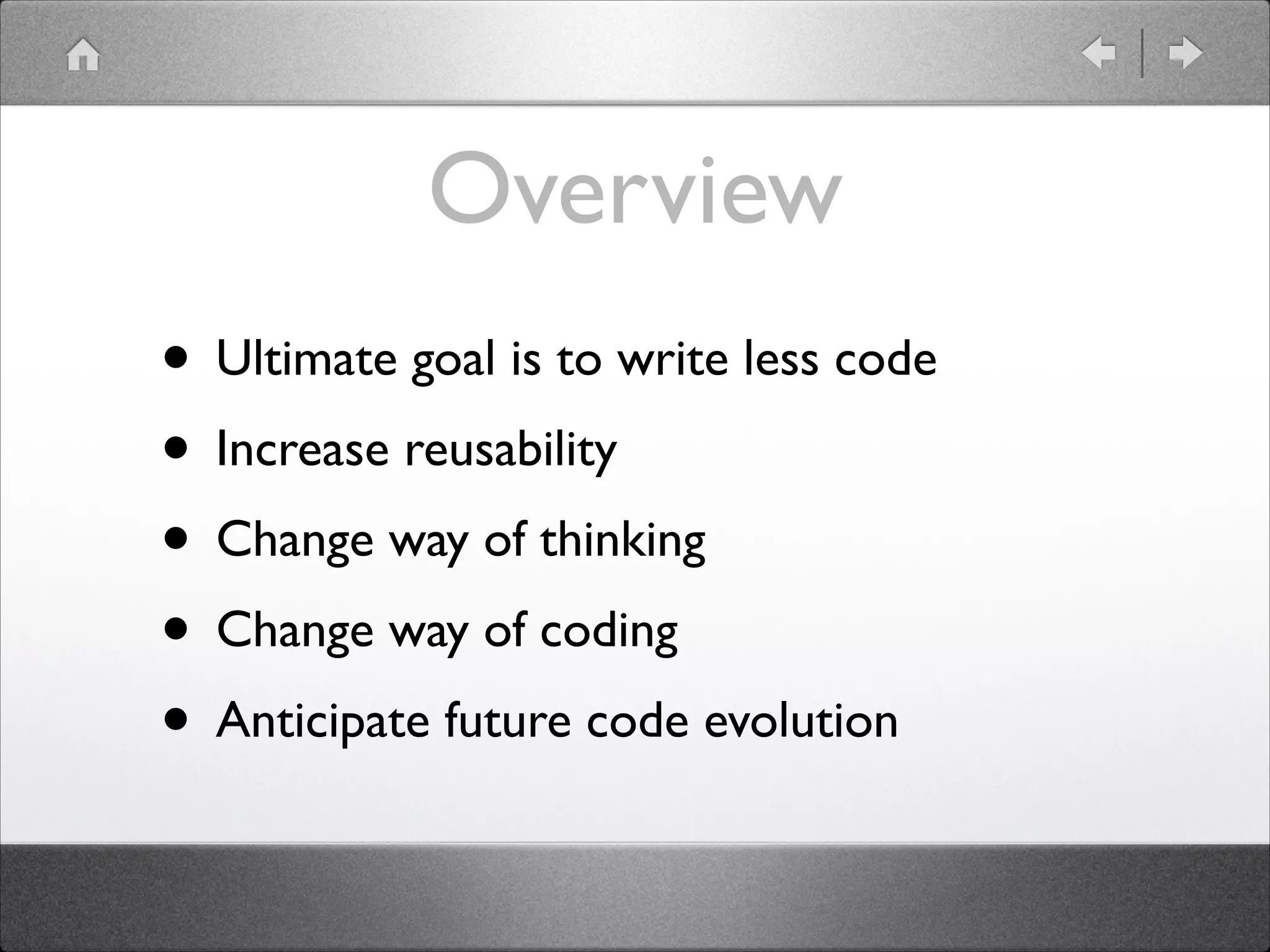


![After function errorMessage(descriptor) { return ({ age : "Age could not be determined", firstName : "First name could not be found!", lastName : "No last name was found on record!" })[descriptor]; } ! function resolveDescriptor(descriptor) { return typeof this[descriptor] !== "undefined" ? this[descriptor] : errorMessage(descriptor); } ! function resolveSeniority() { if (cookie === "senior") { findAge() + 20; resolveAddress(); } }](https://image.slidesharecdn.com/javascriptabstraction-131125090637-phpapp02/75/JavaScript-Abstraction-9-2048.jpg)


![Example function addMethod(object, name, fn){ // addMethod - By John Resig (MIT Licensed) var old = object[ name ]; object[ name ] = function(){ if ( fn.length == arguments.length ) return fn.apply( this, arguments ); else if ( typeof old == 'function' ) return old.apply( this, arguments ); }; } function Users(){ addMethod(this, "find", function(){ // Find all users... }); addMethod(this, "find", function(name){ // Find a user by name }); addMethod(this, "find", function(first, last){ // Find a user by first and last name }); }](https://image.slidesharecdn.com/javascriptabstraction-131125090637-phpapp02/75/JavaScript-Abstraction-12-2048.jpg)

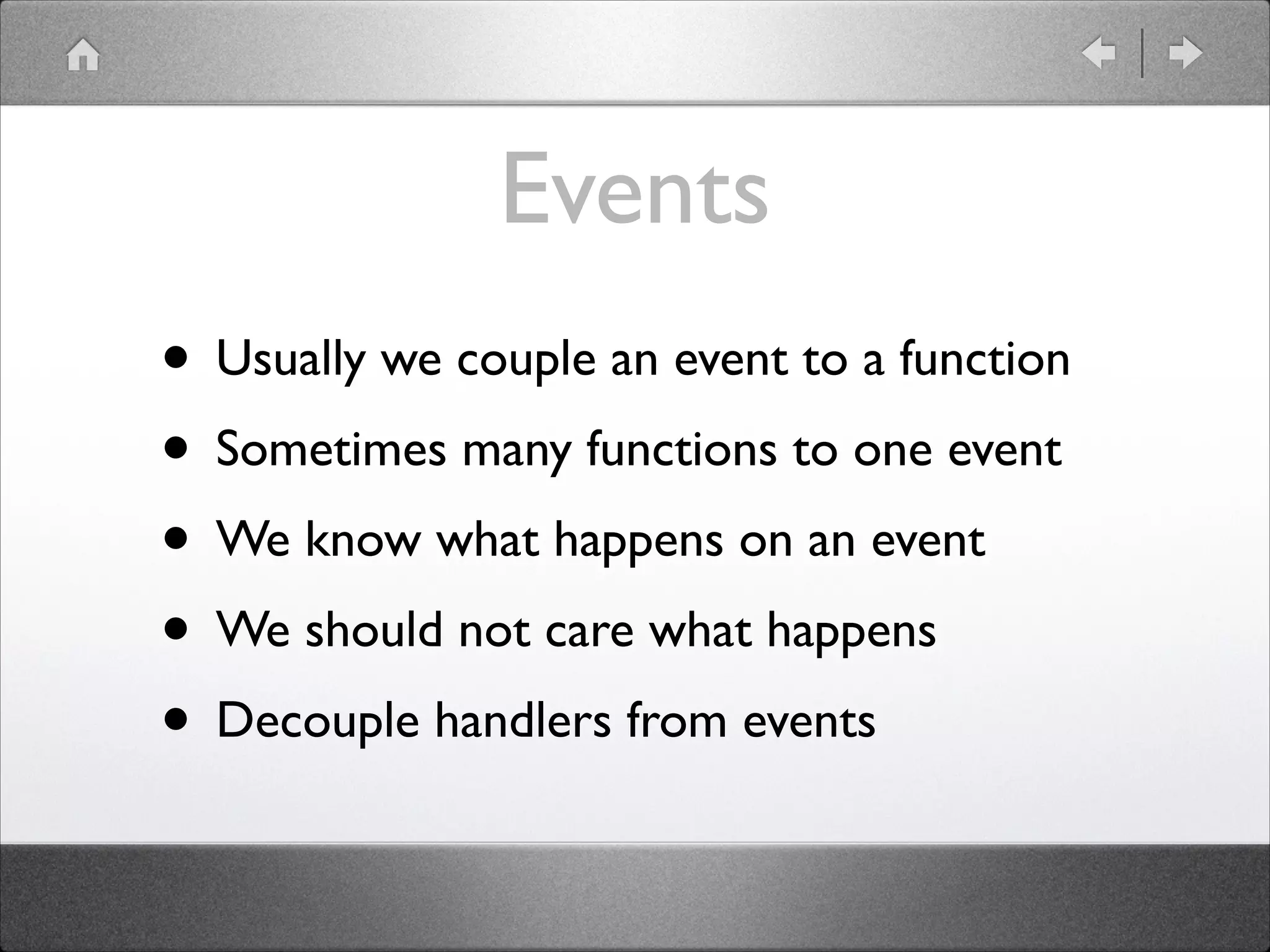


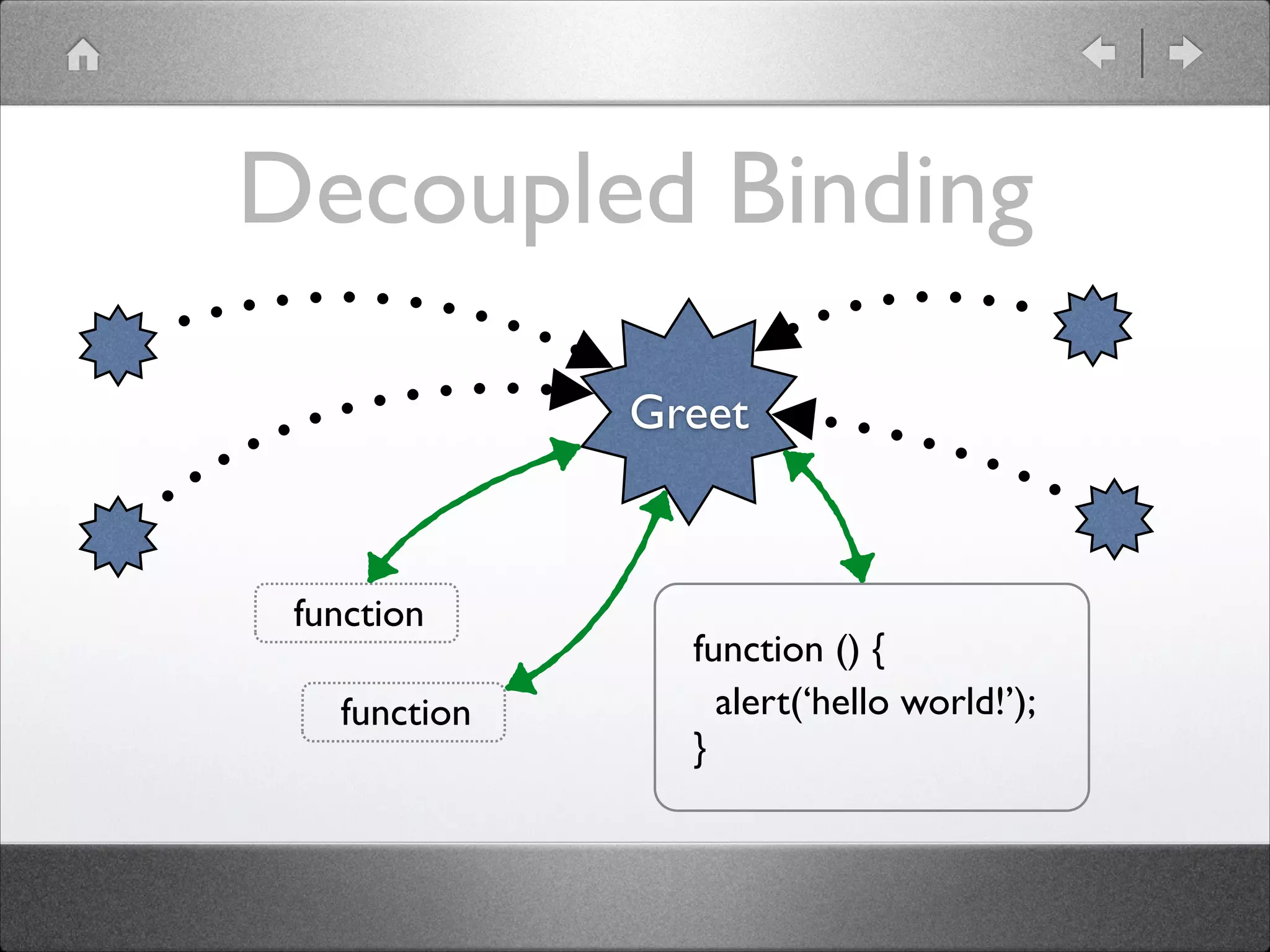
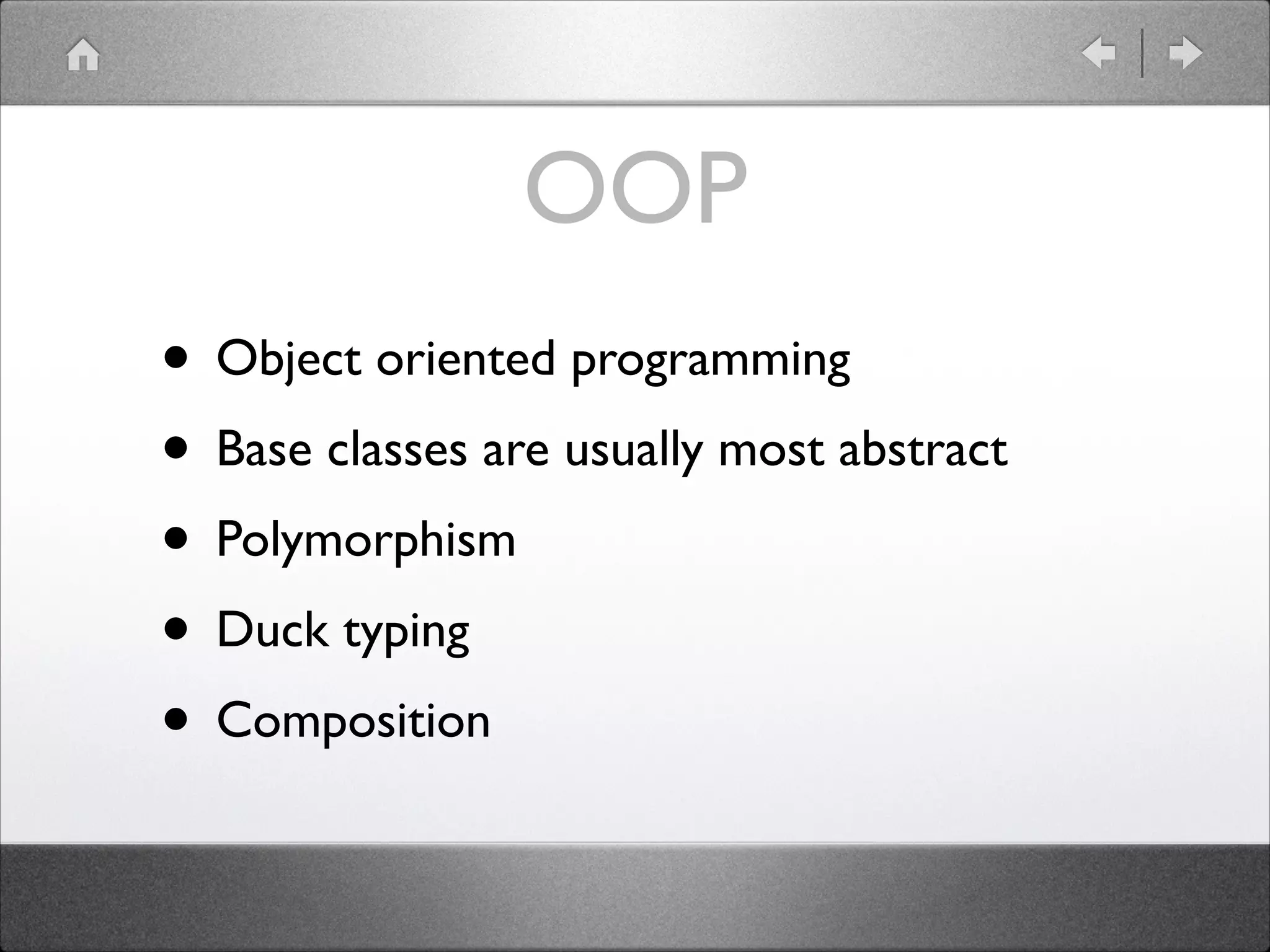
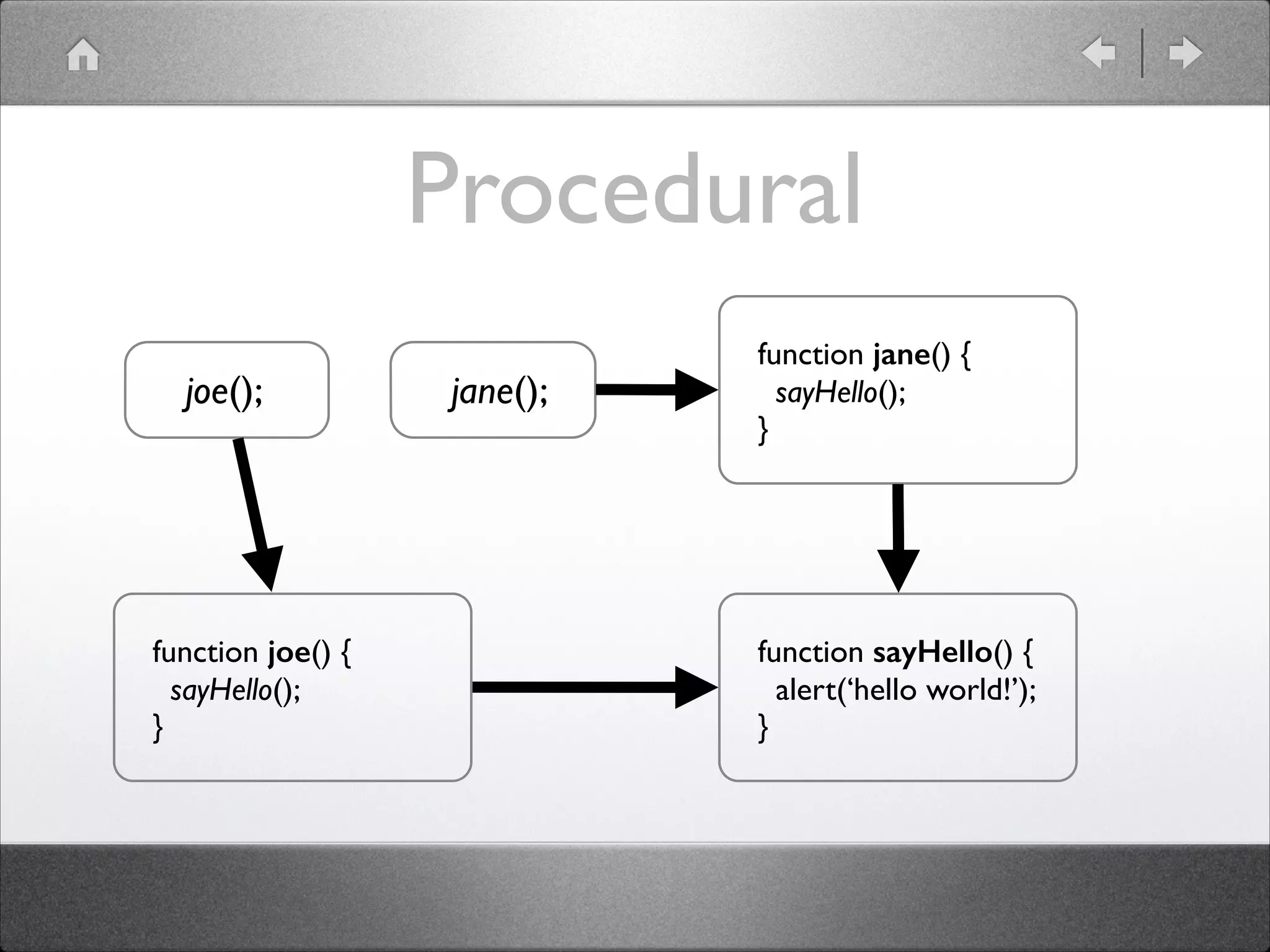
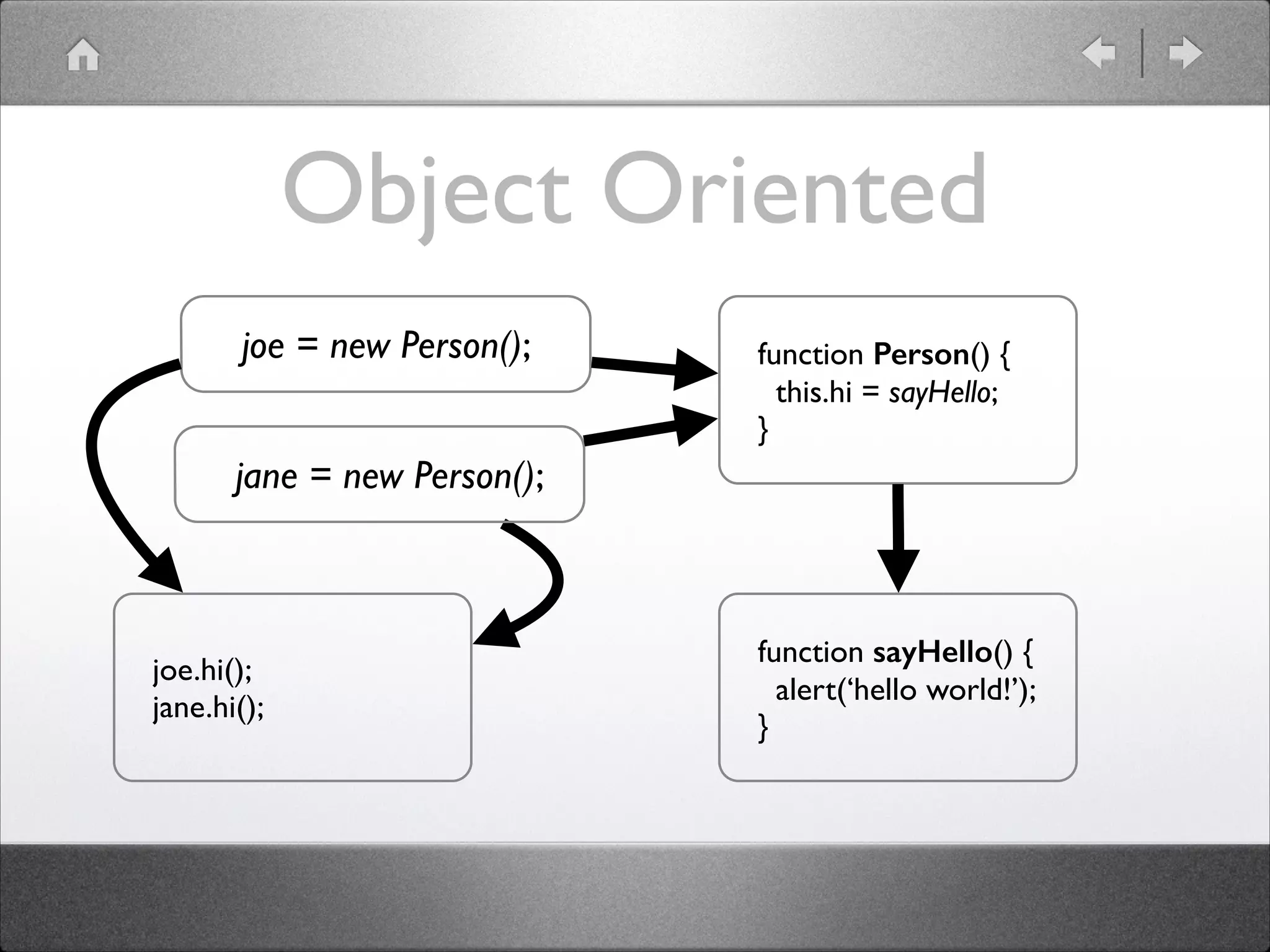
![Example function Person(name) { this.hi = sayHello; this.name = name; function sayHello() { console.log('hello world from ' + this.name); } } ! function init(names) { var people = []; for (var i = 0, count = names.length; i < count; i++) { people.push(new Person(names[i])); } return people; } function greet(people) { for (var i = 0, count = people.length; i < count; i++) { people[i].hi(); } } greet(init(["Joe", "Jane"]));](https://image.slidesharecdn.com/javascriptabstraction-131125090637-phpapp02/75/JavaScript-Abstraction-21-2048.jpg)
![Example var Rifle = function () { this.reload = function () {}; this.fire = function () { /* ... */ }; }, ! Cannon = function () { this.reload = function () {}; this.fire = function () {}; }; ! var Soldier = function (gun) { this.currentGun = gun; this.inventory = { guns : [ gun ] }; this.attack = function () { this.currentGun.fire(); }; }; ! var Tank = function (gun) { this.currentGun = gun; this.inventory = { guns : [ gun ] }; this.attack = function () { this.currentGun.fire(); }; }; ! var soldier = new Soldier( new Rifle() ), tank = new Tank( new Cannon() );](https://image.slidesharecdn.com/javascriptabstraction-131125090637-phpapp02/75/JavaScript-Abstraction-22-2048.jpg)
![Example var Rifle = function () { this.reload = function () {}; this.fire = function () { /* ... */ }; }, ! Cannon = function () { this.reload = function () {}; this.fire = function () {}; }; ! var Combatant = function (gun) { this.currentGun = gun; this.inventory = { guns : [ gun ] }; this.attack = function () { this.currentGun.fire(); }; }; ! var soldier = new Combatant( new Rifle() ), tank = new Combatant( new Cannon() );](https://image.slidesharecdn.com/javascriptabstraction-131125090637-phpapp02/75/JavaScript-Abstraction-23-2048.jpg)

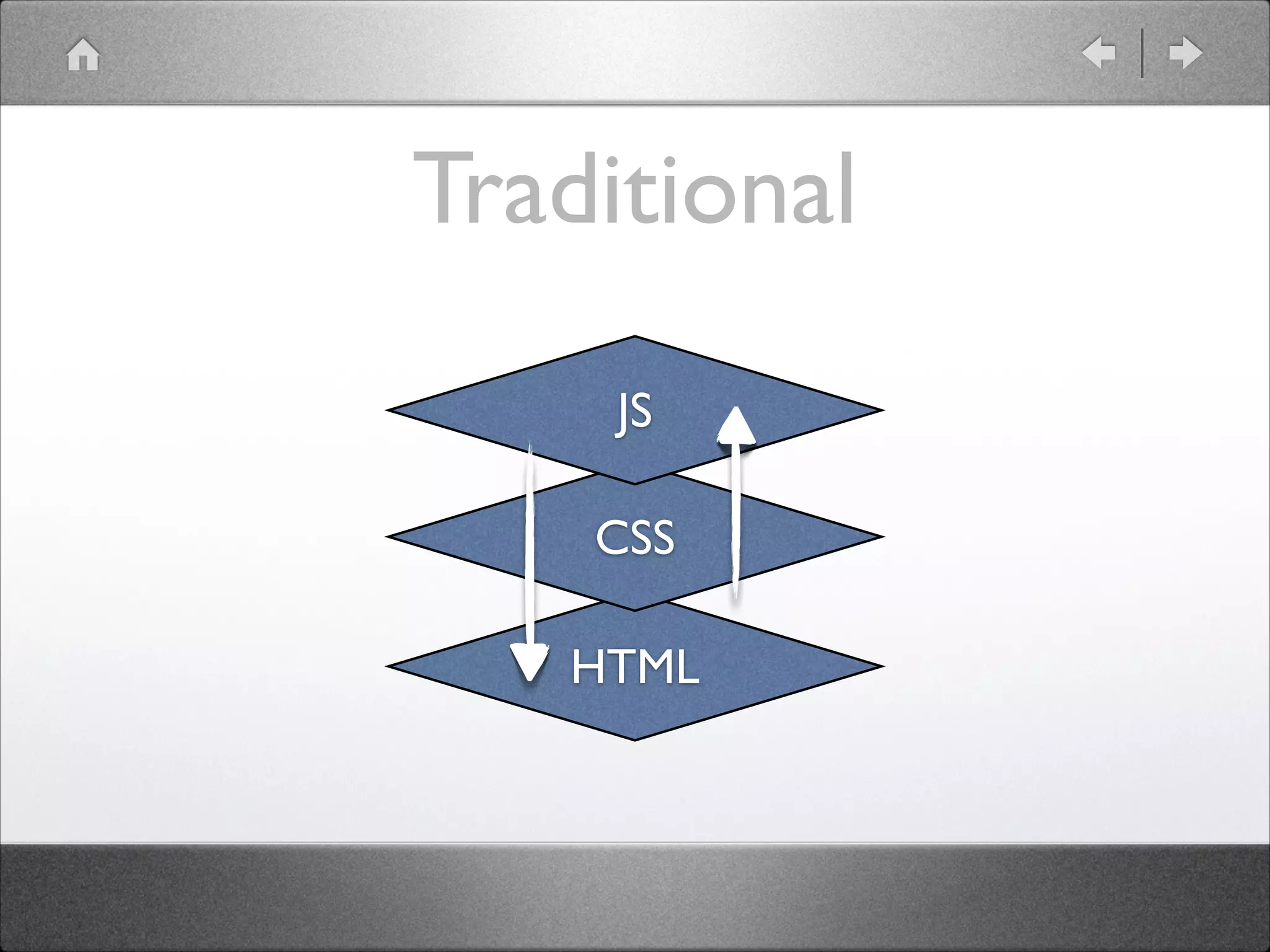
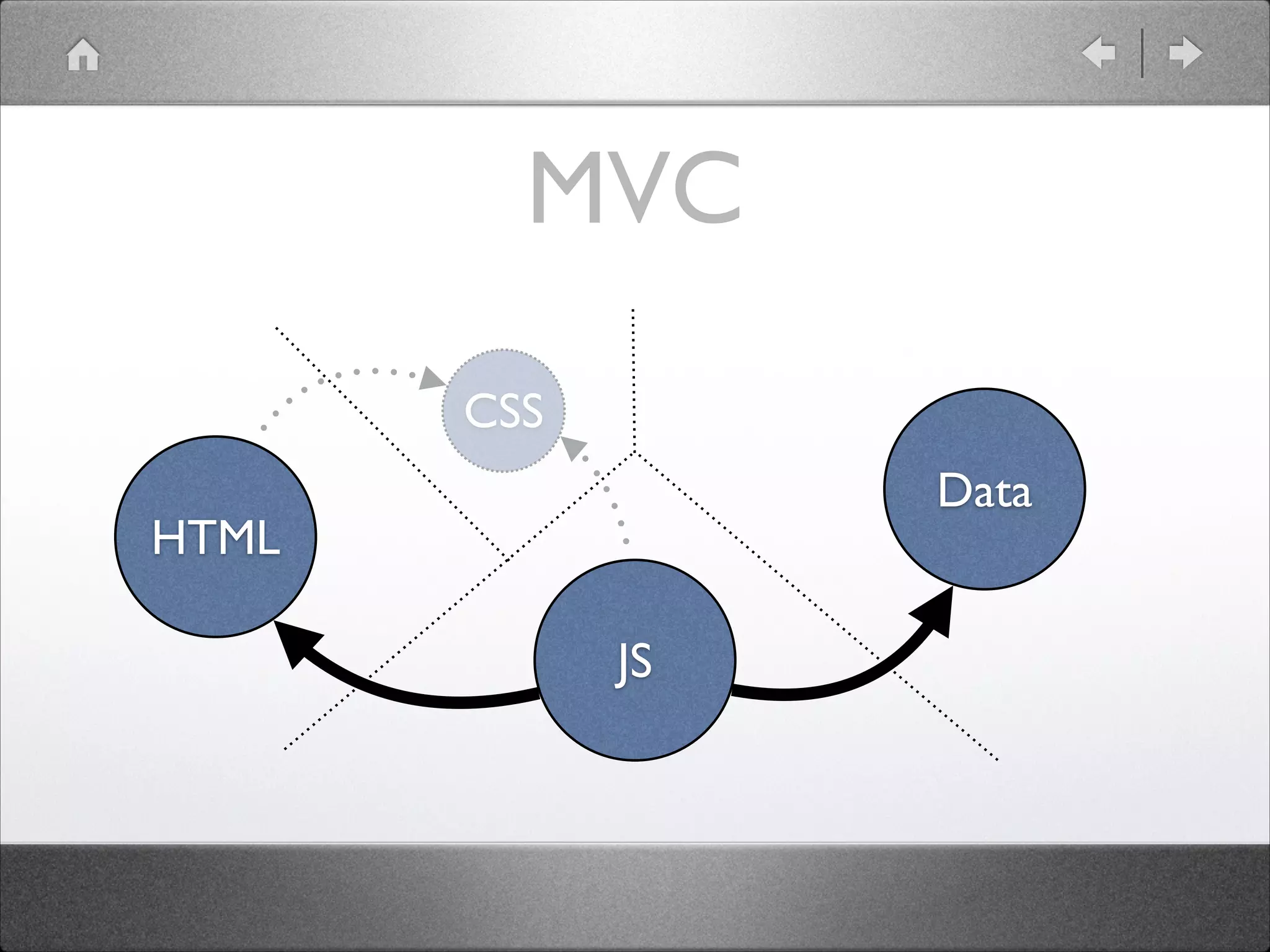
![Example function controller(model, view) { var items = “"; ! for (var i = 0, count = model.items.length; i < count; i++) { items += view.item.replace("{{item}}", model.items[i]); } } return view.list.replace("{{items}}", items); ! ! var view = { item : "<li>{{item}}</li>", list : "<ul>{{items}}</ul>" }; ! var model = { items : [1, 2, 3] }; ! console.log(controller(model, view));](https://image.slidesharecdn.com/javascriptabstraction-131125090637-phpapp02/75/JavaScript-Abstraction-27-2048.jpg)
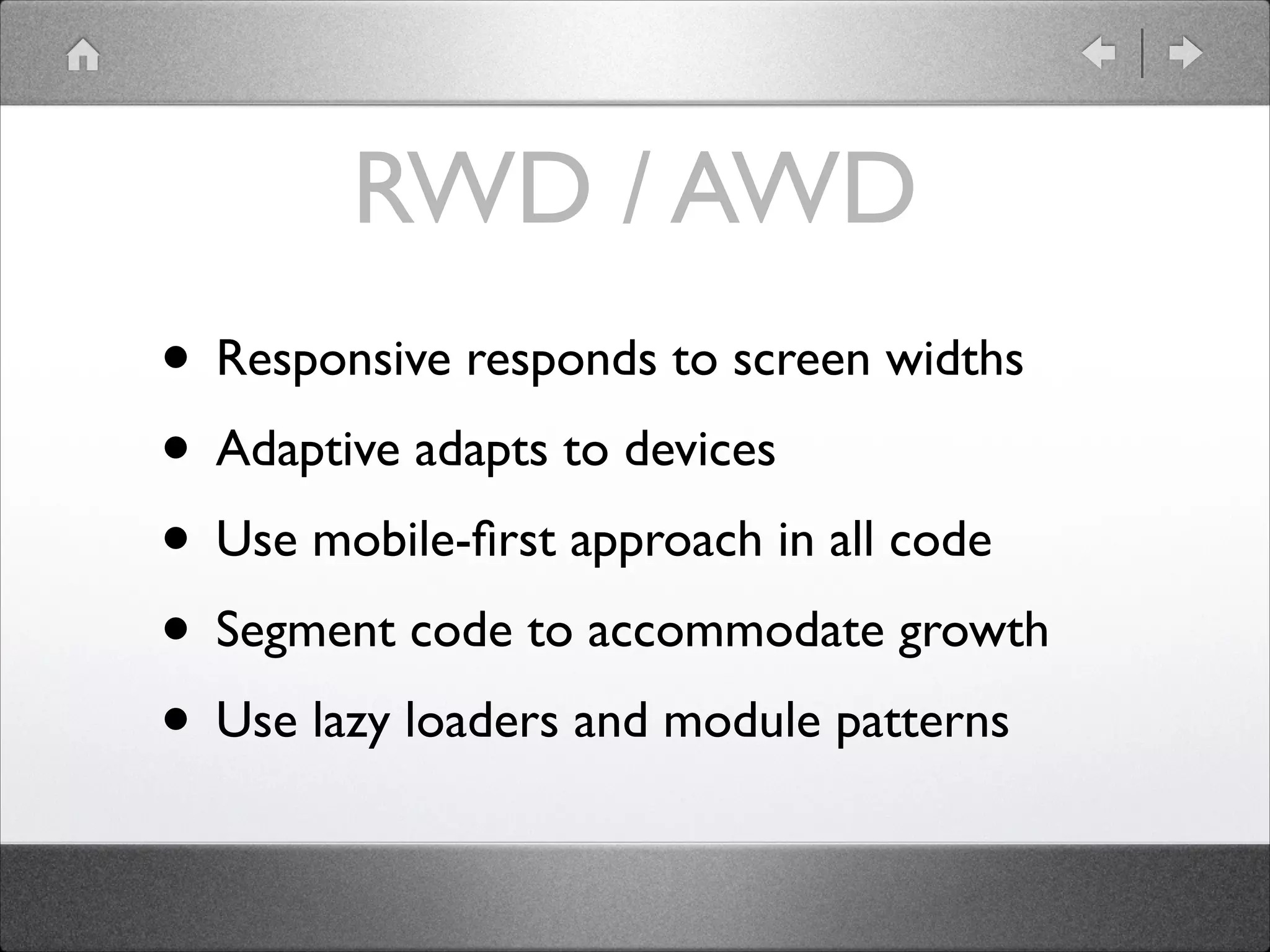

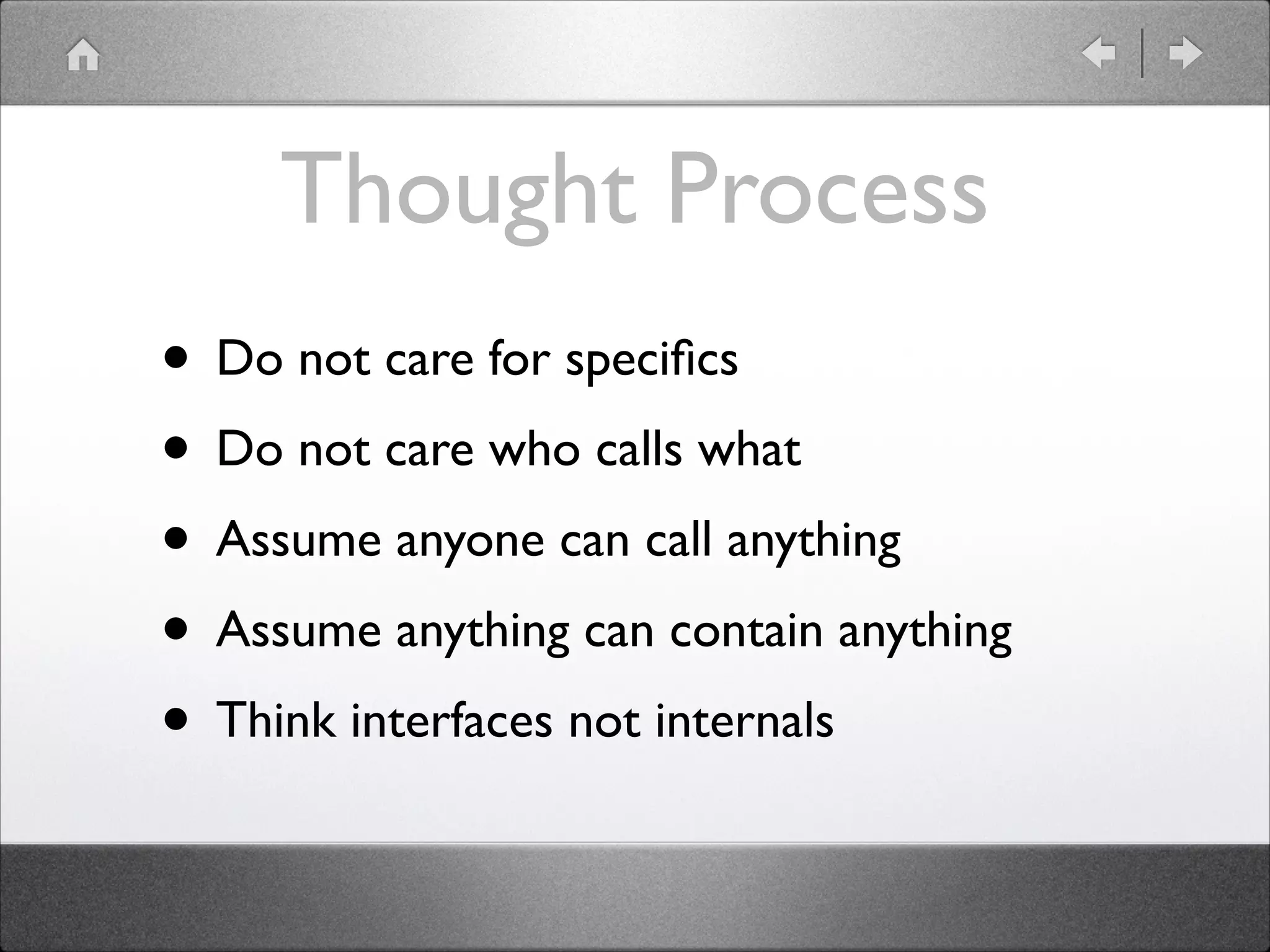

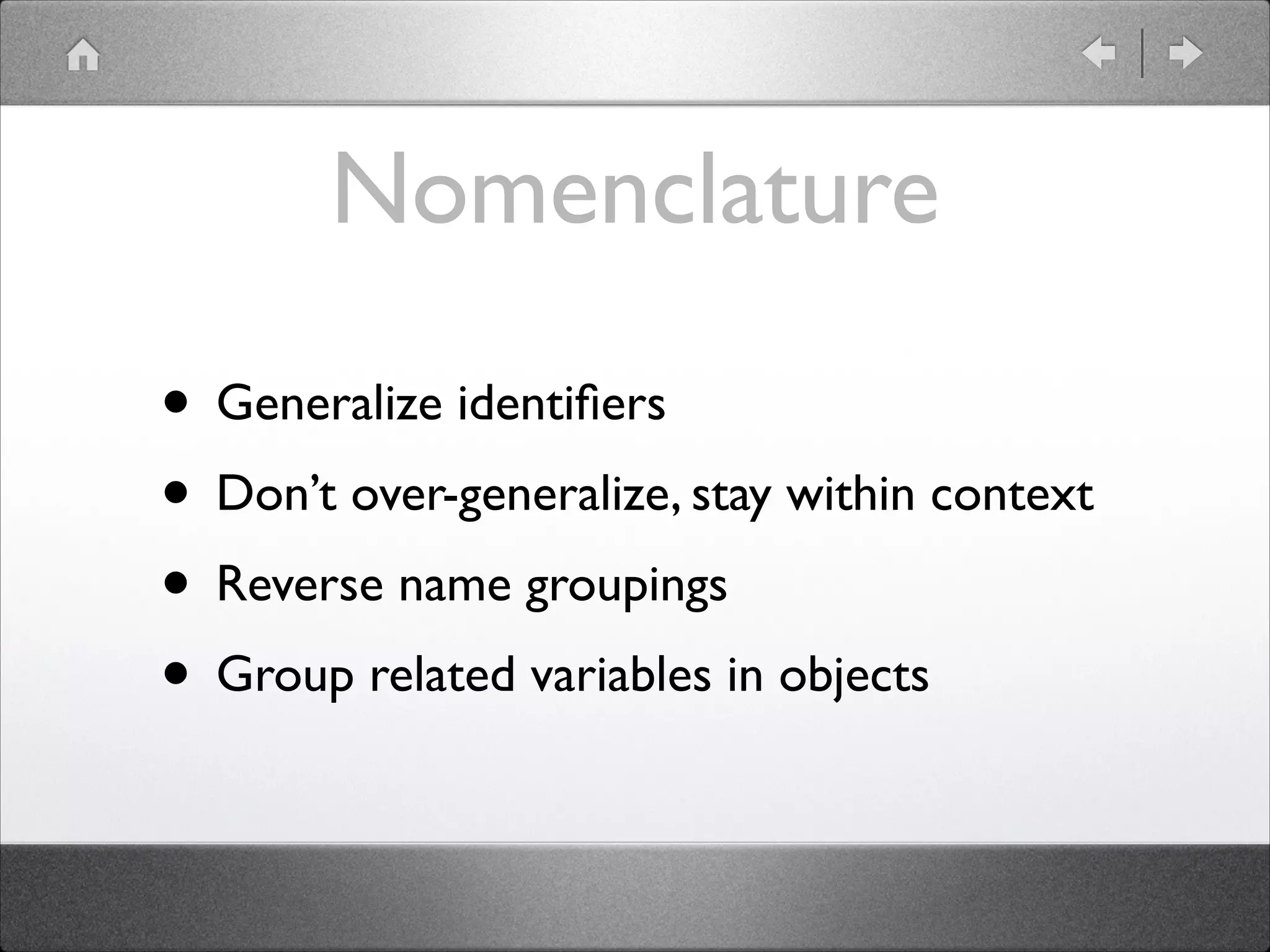


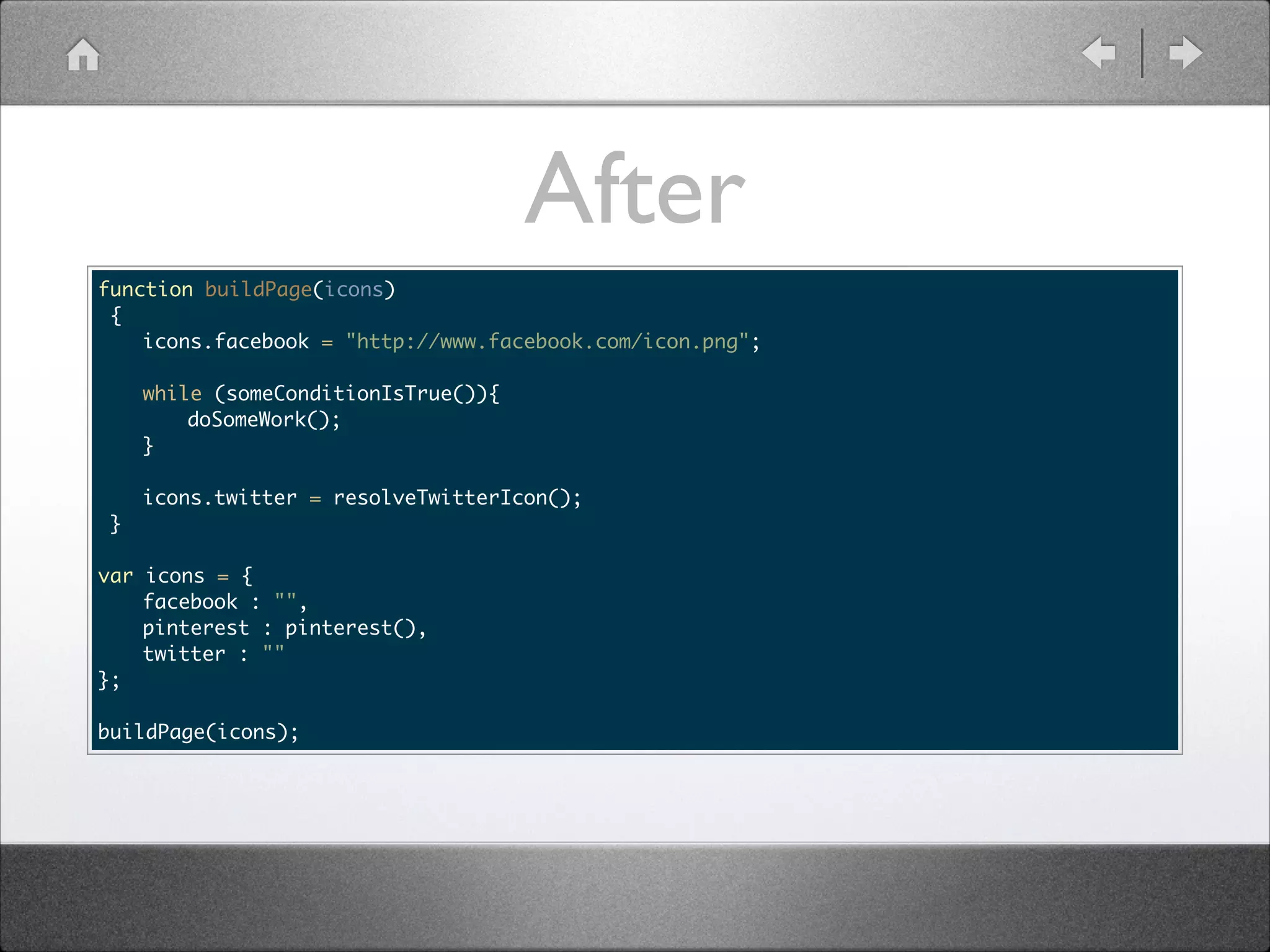


![Example function initModules() { for (module in app.modules) { if (app.modules[module].init && app.modules[module].checked()) { if (app.modules[module].init.call(this, arguments)) { initialized++; } } } } function initModules() { var module; for (moduleName in app.modules) { module = app.modules[moduleName]; if (module.init && module.checked()) { if (module.init.call(this, arguments)) { initialized++; } } } }](https://image.slidesharecdn.com/javascriptabstraction-131125090637-phpapp02/75/JavaScript-Abstraction-38-2048.jpg)

